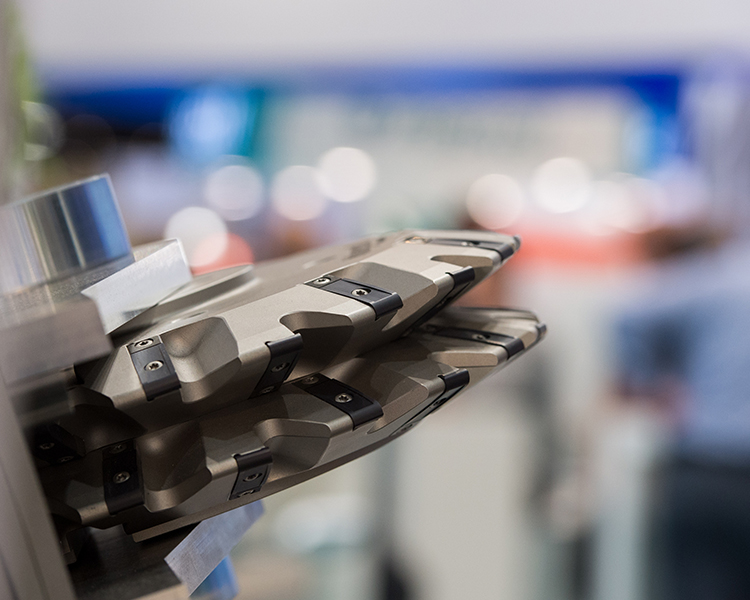BY DOUG BURNSIDE
As many fabricating and metalworking companies seek to revitalize production in these trying times, a new sense of urgency is prompting creative approaches to automation. While each shop will forge a unique path to its own new reality, they’ll share common challenges and solutions.
ADVANCING AUTOMATION COLUMN
The dominant players in any industry normally run as close to maximum production capacity as possible. Until the global coronavirus pandemic, the chief concern throughout the manufacturing sector was fulfilling greater demand for general-use products. While many industries halted during the pandemic’s genesis, some metal-industry job shops, integrators, and OEMs maintained production to tackle this issue. Others quickly retooled to meet the surge in demand for new products.
Engineers across the Americas collaborated to quickly and innovatively assist with ventilator capacity, facemask availability, and hand sanitizer supply. Many challenges were met by retrofitting robotic systems, with existing configurations changed or upgraded to optimize operations.
As restrictions are lifted and businesses reopen, the potential for follow-up product surges looms. Whether the cause is a turbulent global economy, changing government regulations, worker furloughs, or ongoing labor shortages, the need to better withstand market fluctuations has many company leaders thinking now’s the time to invest in new or upgraded technologies.
If you were pressed to meet demand before, focus on proactive efforts that anticipate obstacles before they strike. As we’ve seen from this global crisis, operations can be made more agile to address demand surges. The side benefits to automation include a more consistent workforce that maximizes return on investment by helping sustain steady job workflow and improve product quality.
Scaling Up for a Robot Reboot
Manufacturers thinking about a retrofit may first want to consider the process of retooling.
Basic Tooling. Often built in-house to avoid production delays, basic tooling (or jigs) can be fabricated out of a variety of materials. Whether welding a piece of tube metal to accompany a few clips or 3D printing a strong thermoplastic to better compliment the robot, having a well-designed tool improves task efficiency.
Modular Tooling. Less common for robotic welding, modular tooling is usually a secondary option that provides some flexibility while maintaining dimensional control. Keep in mind, however, that table-style tooling can fall short because it’s generally limited to flat parts and is very heavy.
Savvy fabrication shops may opt to repurpose an existing semiautomatic fixture, but an extreme amount of attention should be given to limiting part movement to keep the entire process from being disrupted.
Dedicated (Automatic) Tooling. Known for speed and accuracy, dedicated tooling usually accommodates more complex applications. While this tooling style tends to cost more up front, it may be more financially sound in the long term because it normally requires little to no labor involvement for actuation, part proximity sensing, and sequenced clamping once installed.
As with any design process, a thoughtful, well-executed blueprint is vital because many productivity gains are realized (or lost) during this phase. In general, a good checklist of items to follow when retooling is:
Choose fixture material wisely
Optimize and orient the fixture to maximize cycle time
Focus on accessibility, repeatability, simplicity, and dependability
Follow the American National Standards Institute (ANSI) safety standards.
Regardless of tooling type, the best place to start is by reaching out to your robot supplier or integrator. This will aid in a risk assessment (if needed) and, in many cases, a solution can be discussed and agreed upon over the phone – with 50% of manufacturers installing the new equipment on their own.
‘Easy Wins’ with Robotic Automation
In addition to tooling, you might want to consider certified pre-owned robots. A growing trend among small job shops and medium-size companies, rebuilt robots are often a more-affordable alternative to what can be a hefty investment.
Under pressure to scale up quickly, some manufacturers are uncertain how to move forward without causing too much disruption. For companies new to robotic automation and looking to incrementally improve production, a cold-turkey approach may be enough to boost throughput. Ideally, the first step is a plant audit by a robot vendor to see what application will best compliment your factory’s layout.
Other than welding, popular options for first-time robot system users include coating, grinding, inspection, milling, painting, picking, sortation, attaching fasteners, case erecting, machine tending, plasma cutting, and press tending.
Not only must robotic technology be robust enough to deal with high-demand production, it should be engineered to easily integrate with existing automation. While timely implementation is important, developing and executing a progressive action plan to leverage a new technology is equally important.
From strategic upskilling and creative redeployment of current employees to creating best practices and tracking key performance indicators (KPIs) such as cycle time, uptime utilization, consumables used, and weld quality, forward-thinking actions are vital to success. Keeping a regular maintenance schedule to maintain peak robot functionality is also advised.
Facilitate Integration by Flattening the Learning Curve
Introducing technologies used to be disruptive. However, newer programming methods are designed to ramp up deployment and operation faster than ever.
Teach pendants. A teach pendant is the primary way a user programs a robot. By making pendants easier and more intuitive to use, the entire robot becomes easier and more intuitive to use.
While very powerful, a standard robot pendant is often too complex for new users and usually requires a hands-on training course at an international Association for Continuing Education and Training (IACET)-accredited robot training facility. A touchscreen interface, on the other hand, enables users to become skilled much faster and training courses can be put online.
Our intelligent Smart Pendant, for example, is similar to a smartphone or tablet. Featuring a 10.1-inch touchscreen, the pendant uses patented Smart Frame technology that allows the robot to adapt to the operator’s position and frame of reference. Users jog the robot with familiar left-right, away-toward, and up-down buttons, eliminating the need for conventional Cartesian coordinates (X, Y, Z) that can confuse and frustrate new robot users.
Applications requiring greater functionality, such as welding, conveyor tracking, multiple robot control, etc., are best programmed with a standard pendant. Similarly, manufacturers that begin robotic automation with a basic application but have plans for more difficult tasks down the road would be wise to choose a standard pendant (or the option to have one available for future use). Inspection, machine tending, and light handling tasks are often ideal for a Smart Pendant.
Collaborative Robots (cobots). With the advancement of the “collaborative” robot movement, users are now able to work in close proximity to, or with, robots – often without the need for additional fencing or guarding.
Cobots use power and force limiting (PFL) technology to detect if a human is present during operation. If so, the robot stops and waits for an “all clear” signal before resuming movement.
PFL also enables hand-guiding, the ability to program the robot by physically moving it. This enables the user to quickly redeploy the robot, further contributing to ease of use.
As with any robotic installation, a risk assessment is required to ensure safety is maintained, and a training class is highly suggested for leveraging the technology to its fullest advantage.
Focusing on the Future
In the face of uncertainty, one thing is sure: manufacturers across all industries can rise to the occasion. While it will take sheer tenacity from business leaders and their employees to keep company doors open, the use of robotic automation for industrial production can help ease the way to more productive operations, addressing stringent demands and delivering future productivity gains.

































